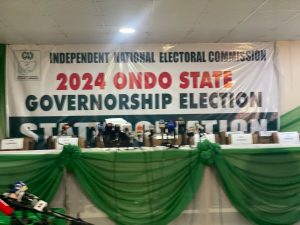Opinion: 9 reasons the Indian CEO keeps coming to the rescue

They join a growing number of global CEOs of Indian origin, according to social media, news reports and online searching (incidentally, Google is run by an Indian).Here’s who I came up with:Shantanu Narayen, AdobeSundar Pichai, Alphabet, the parent company of GoogleSatya Narayana Nadella, MicrosoftRajeev Suri, NokiaPunit Renjen, Deloitte Vasant “Vas” Narasimhan, Novartis Ajaypal “Ajay” Singh Banga, MastercardIvan Manuel Menezes, DiageoNiraj S. Shah, Wayfair Sanjay Mehrotra, MicronGeorge Kurian, NetAppNikesh Arora, Palo Alto NetworksDinesh C. Paliwal, Harman International Industries A disclaimer that this is hardly complete or exhaustive. Some are the children of Indian immigrants but I include them because (another disclaimer) I am, too, and can attest to inheriting habits and experiences from my parents’ generation.To be sure, there is a risk of reading into one group’s success as a case of Indian exceptionalism, which I truly do not believe. Rather, a series of external factors have contributed to the rise of the Indian CEO, which says more about the state of corporate America, a globalized workplace, technological disruption and the leaders who might prevail. I’ve broken down some of these factors with the intention that the lessons within might apply to all of us. Among them: 1. An acceptance of change and uncertainty. Every company is grappling with some form of disruption. Now picture India, a country of more than 1 billion people, dozens of languages, uneven infrastructure. At every turn is uncertainty, including whether water will emerge from the tap in the morning to brush your teeth. This breeds both an acceptance of forces beyond our control and the need to persevere, despite them. It allows innovation and patience with process to coexist in a corporate bureaucracy.2. Seeing around the corner. The ability to predict what’s shaping our marketplace is a necessary trait in a leader. Indians are especially equipped, thanks to their embrace of data and constantly, perhaps unconsciously, crafting a Plan B (in case no water comes out). Consider the future of malls in America as articulated by Mathrani, the real-estate veteran just named to run WeWork. “You sort of sit back and say ‘OK, if there are 1,100 malls in the country, where do I see this industry going long term?'” he said in an interview with CNBC. “If that number is 800, then what percentage of that 800 do you want to own? So it became fairly straightforward to me that the better malls would continue to do better and the lower-quality malls over time would continue to deteriorate.”This might not seem revolutionary but it is different from the pivot into the unknown: The best strategies marry data with current marketplace conditions and push a vision for the future. 3. All about metrics. I do not want to feed the stereotype of Indians as good at math (I have never gotten over my own C in calculus). But here’s another way of looking at it: When you grow up in a country of 1 billion people, everything boils down to odds. The odds of gaining admission to nursery, grammar school, then college; of your standing and class rank within each; of maximizing scores in order to advance; exams for civil-service jobs; the visa lottery to get overseas. As a child, I marveled at my cousins flawlessly rattling off statistics on everything and anything (including cricket) in relation to their own chances of making it. Today that role more fancily falls under “data intelligence” and has landed an important seat at the table, not to mention a skill required in modern CEOs. Incidentally, at least three of the men (yes, the gender imbalance is another metric worth pointing out) on my list (Pichai, Arora and Krishna) above are graduates of the prestigious Indian Institutes of Technology, a group of engineering colleges with acceptance rates reportedly below 2%. 4. Education, especially STEM. Indian immigrants are among the most highly educated in the US; according to Pew, 77.5% had a bachelor’s degree or higher in 2016 — the highest share of any top origin country — compared to 31.6% of native-born Americans. At the graduate level over the last few decades, foreign-born students have filled the gap of fewer Americans studying computer science and engineering, although growth is slowing. These are skills coveted not by just Big Tech; if you sell furniture on the internet, for example, you might feel more like a tech company than a retailer. 5. Work as family and the original helicopter parents. When Indra Nooyi was named CEO of PepsioCo, well-wishers visited her mother’s home in India to offer congratulations. That gave Nooyi, who stepped down in 2018, an idea: to write thank you cards to the parents of Pepsi’s star performers. “I was a product of my upbringing,” she said. “It occurred to me that I had never thanked the parents of my executives for the gift of their child to PepsiCo.” Millennials’ parents are more involved in their children’s careers than ever, and I can only imagine their reaction to a letter allowing them to share the trophy, too. Indian companies, which have long served tea in the break room or welcomed colleagues to the boss’ sister’s wedding, are firmly ahead of the trend rising in the West of blurry lines between home and work. 6. Diversity. A diverse workforce and leadership has perhaps never been more important to companies. A survey by Deloitte (also run by an Indian CEO) found 69% of employees who believe senior management is diverse see their working environments as motivating and stimulating versus 43% who don’t perceive leadership as diverse.That being said, the men on this list — diverse candidates who land the top job — are the exception rather than the rule. Asians are well-represented in technology companies, but severely underrepresented at the executive levels, according to at least one study of five tech companies. And more recent research shows that Asian Americans’ success has more to do with white Americans giving them a chance and ending discriminatory practices, bringing their wages to parity and treating them with respect. Most Indians owe their arrival on U.S. shores to the Immigration and Nationality Act of 1965, Civil Rights-era legislation that removed quotas and de facto racial discrimination. As more Indians rise through the ranks, whether and how they “pay forward” opportunity to other underrepresented minority groups warrants scrutiny.7. Authenticity and adaptation. We’ve been in the age of authenticity for some time, partly thanks to Twitter but also due to a focus on values and character over charisma. Pepsi’s Nooyi balances being an authentic leader with awareness of how she shows up. She recounts arriving in the US in 1978 and missing her beloved cricket and filling the void with … the Yankees. “I also discovered that in business, the language of business is sports,” she said in an interview. “Everybody in business analysed the game and unless we were part of the whole process, we felt very left out. So I combined my love for, or an urge to have an affiliation to the bat-and-ball sports, with the Yankees’ incredible season with this language of business. Things came together.”8. Time is precious, time is infinite. When I moved to India in 2006, I discovered the notion of synchronous time and how it applies to the workplace. Americans tend to be sequential and focus on the binary; there’s life and work. A deeper definition: “Time perception means the way we view the passing of time; is this for us a series of passing events (sequential) or is it synchronic, where past, present and future are all interrelated?” This theory jives with the approach of Satya Nadella, CEO of Microsoft, in redefining balance. “What I’m trying to do is harmonize what I deeply care about, my deep interests, with my work,” he told the Australian Financial Review. I view Microsoft as a platform for me to be able to pursue my own passions. And that gives me a lot of meaning, and that, to me, is the ultimate form of relaxation.”9. A belief in meritocracy. An immigrant rising to be CEO of a Fortune 500 company is rare and remarkable, and yet also supposed to be the way America works. Oversimplified perhaps, it is the hardscrabble narrative that markets, investors and employees cling to, a tenet of U.S. capitalism embodied and embraced by the CEO himself. “I am very blessed … plenty of opportunities and plenty of luck,” Mathrani told a nonprofit human rights group honoring him last year. “So the American story is alive and well.” Indeed, it might just be the Indian CEO who saves it.







